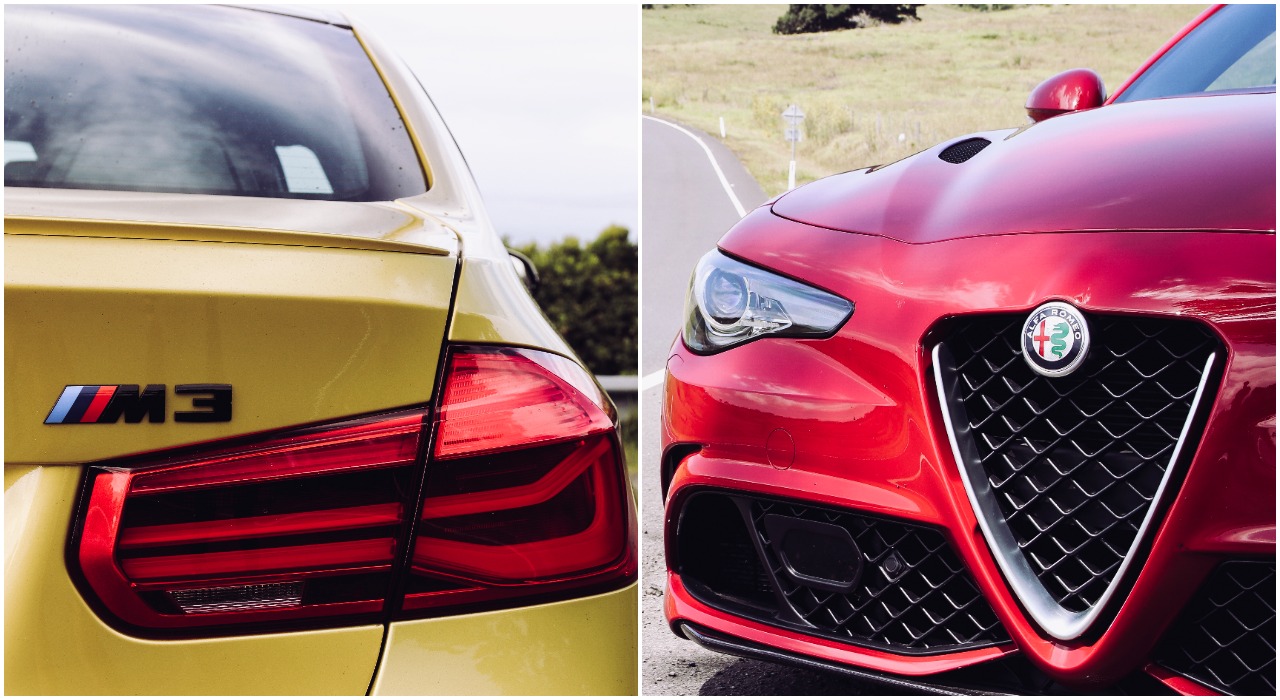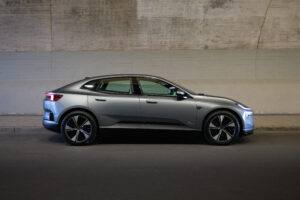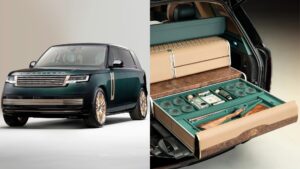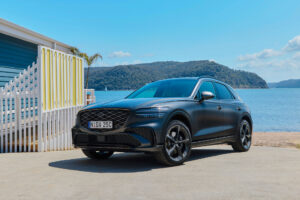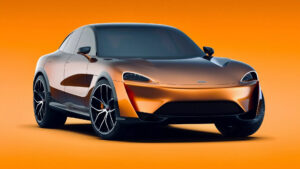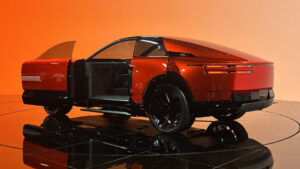The hall of fame-enshrined BMW M3 goes head-to-head with the beautifully voluptuous Alfa Romeo Giulia Quadrifoglio.
I’ve already given away the crux of this article in the title, why? Because I felt Alfa deserved the upfront praise for such an impeccable product and one that can topple even the best in the sports sedan market. That being said, the M3 Pure is still an intriguing and attractive vehicle, but even BMW finally can’t restrain raw excitement and a revamped Italian charisma.
BMW M3 Pure
- 3.0-litre straight-six turbo-charged drivetrain
- 331kW of power & 550nM of torque
- 0-100km/h dash of 4.0 seconds flat
- Seven-speed dual-clutch transmission
- From $129,900 (excluding on-roads)
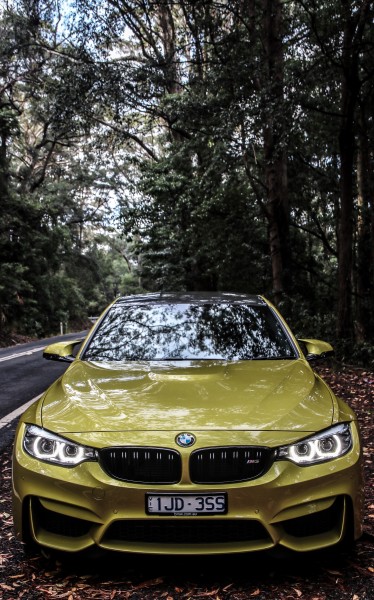
I’ll be the first to admit that my attitude towards BMW’s M cars is skewed. Last year’s impressions of the M4 caught me off-guard in an irrecoverable way from the get-go. Since then, I tried to stay neutral when the M3 Pure came around – tried being the operative word.
The M3 is very good, I can’t deny that. Simply, it was a pleasant surprise after last year’s M4 fiasco. I was now familiar with how BMW’s over-engineered iDrive 6 tech interface worked, the ins-and-outs of the dual-clutch drivetrain, and what PlayStation cheat code I needed to unlock the best alter-egos of its aggressive ‘M modes.’
That being said, this M3 Pure still left something to be desired. Two somethings, actually. Balance and X-Factor.
The first thing to note is that the M-Competition package comes standard with the Pure variants. Exactly what you get for the additional dollars you can figure out for yourself, what’s important to note is that this M3 is all about the grunt.
The chassis has been refined for this year’s variant, but to be honest the sports facade of the vehicle still feels unbalanced. When in ‘sport’ or ‘sport plus,’ the M3’s default is both tougher steering and tighter suspension. For some reason, however, the sports modes actually feel more natural and enjoyable to drive on the road with the two aforementioned variables in ‘comfort’ mode, alongside a sport-configured engine and gearbox. This reaffirms to me that something’s not aligned quite right somewhere within the German contestant.
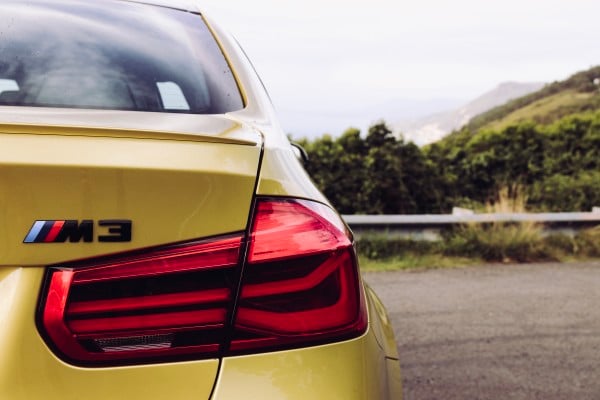
The M3 absolutely hunts, but it does so at the expense of a coveted playfulness and agility. Its nose is mighty and heavy; the rear almost too grippy for its own good. Sure, you can debunk this with a few tweaks and toggles – hell you can put it into a league of its own with launch control & ESC off – but everything about the car’s programming just seems counter-intuitive and mismatched.
To its credit, the M3 undeniably sounds better than last year’s M4, spurts an exciting soundtrack on the overrun, and also has a better automatic gearbox in the lower gears (i.e it changes efficiently and doesn’t sound like a diesel). The local speed limit found on the heads-up display is handy to help you calculate in real time how many points you’re going to lose, and the M-stripe tailoring on the seat belt and stitching into the steering wheel are lovely touches.
On its own, the M3 is a great car. Put it back to back with a new Italian front-runner, however, and it’s got itself a problem.
Alfa Romeo Giulia Quadrifoglio (QV)
- 2.9-litre V6 Bi-turbo engine
- 375kW of power & 600nM of torque
- 0-100km/h squirt of 3.9 seconds
- Eight-speed automatic gearbox
- From $143,900 (excluding on-roads)
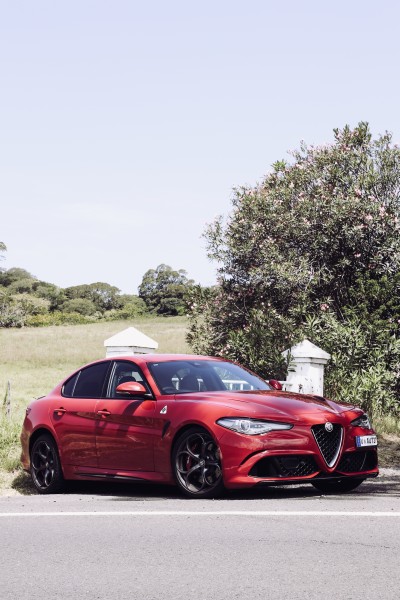
Alfa’s staple charms of beauty and speed have returned with the QV, stamped triumphantly on its sides with the same four-leaf clover you’d find on its racing cars of the 1920’s. Pioneered by Ferrari’s Chief Engineer Roberto Fideli, the Giulia was Alfa’s final prayer to the automotive Gods to bring the brand back from the dead.
And what a car the Giulia is. I handed back the keys to the M3 the same day I jumped into the Quadrifoglio, the top-of-line Giulia offering, and it was an incredibly overwhelming experience. It’s lighter, faster, and sounds more refined than the M3.
The QV really was surprisingly wonderful. Sporting a six banger Ferrari engine with two cylinders lopped off, the raw, untweaked sound with much fewer crackles and pops than its German cousins still triggers a giggling sensation akin to an 8-year-old girl. The pure torque experience complemented with fluid steering makes it a howler on the right roads; the front-end sharply hones in on its targets with eagerness yet ease.
Alfa’s bold attitude also rises to the surface in its playfulness around corners, giving you some slip on demand, but never leaving you feeling out of control. The suspension is unbelievably comfortable, racking up points on the board for liveability, the same can be said for its backseat leg room.
The Giulia QV’s race mode opens the exhaust valves even further, turns ESC off (but not completely, so it’ll still catch you if you get a little too sendy) and delivers one of the most enjoyable driving experiences you can get within four doors.
Speaking of, sedan practicality doesn’t hinder performance, either. This can be said for both the M3 and the QV. The latter, however, has a considerably higher driving position which actually makes you feel more connected to the experience.
The steering wheel is an artwork in itself. It’s comfortable to hold, not too thick (unlike the M3) and boasts carbon fiber between 3 & 9 topped with Alcantara from 10-2. The gorgeous but dominating aluminum paddle shifters are mounted to the steering column (like they should be), and the start/stop button is in the exciting missile firing position just under the central Alfa Romero branding.
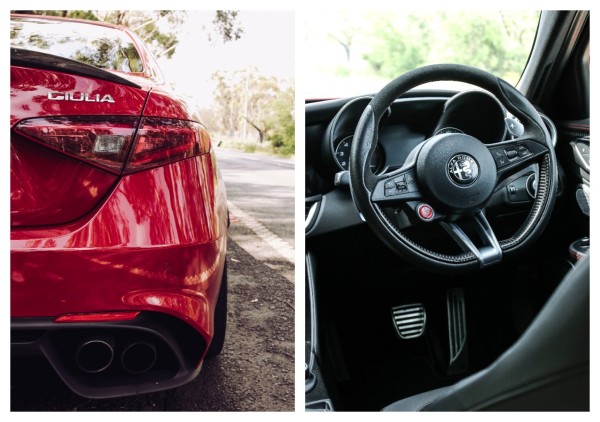
The rear-end is rough and menacing, sporting a quad exhaust that actually looks like it’s after a fight in comparison to the M3’s subtle diffuser.
A personal favourite was our Giulia’s almost erotic blood red colourway. It’s absolutely beautiful. The Giulia QV’s spirit and charisma leave you reeling for more and looking for words. It’s a sucker punch in the most adoring and sensual way possible.
Verdict
BMW has provided the goods with the M3 Pure, but in no way does it attempt to flip the luxury sports sedan market on its head or even offer something uniquely fresh to its drivers with this latest model.
Alfa Romeo’s survival, however, depended on the Giulia. It’s why five billion euros was allocated to its production. That’s a lot of coin to literally put on red.
Here at Boss Hunting we love a good underdog as much as we love a good punt. Alfa Romeo’s Giulia was a roll of the dice, and bloody oath we can confirm they’ve doubled their money.
